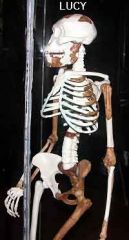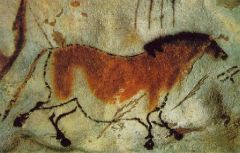![]()
![]()
![]()
Use LEFT and RIGHT arrow keys to navigate between flashcards;
Use UP and DOWN arrow keys to flip the card;
H to show hint;
A reads text to speech;
11 Cards in this Set
- Front
- Back
|
complex society
|
social formation that is otherwise described as a formative or developed state
|
|
|
Olduvai Gorge, Tanzania
|
"The Cradle of Mankind" believed to be the origin of humans
|
|
|
Paleolithic
|
period beginning with the first hominids and ends about twelve thousand years ago. Its principle feature is hunting and gathering
|
|
|
Venus figurines
|
clay statues that have been found that exhibit prominent sexual features indicating an interest in fertility
|
|
|
metallurgy
|
process of working metals into tools etc began to appear in the Middle East by 6000 B.C.E
|
|
|
social class, social structures
|
localized settlements created more complex social and economic relationships especially with the emerging professional classes. Priests, political managers, and artists could focus on their work without concern for basic subsistence
|
|
|
Lucy
|

3.9 million year old hominid skeleton found in the Hadar region
|
|
|
Neolithic
|
period lasting from about twelve thousand years ago to six thousand years ago and is characterized by the appearance of agriculture and larger settlements
|
|
|
Lascaux cave paintings
|

site of 17000-year-old Paleolithic wall paintings
|
|
|
textile
|
flexible material comprised of a network of natural or artificial fibers often referred to as thread or yarn - evidence found of them at the Catal Huyuk site
|
|
|
Neolithic "revolution" vs. "agricultural transition"
|
transfer from hunting and gathering to agriculture and settlement vs. transfer of method/plants in agriculture
|

